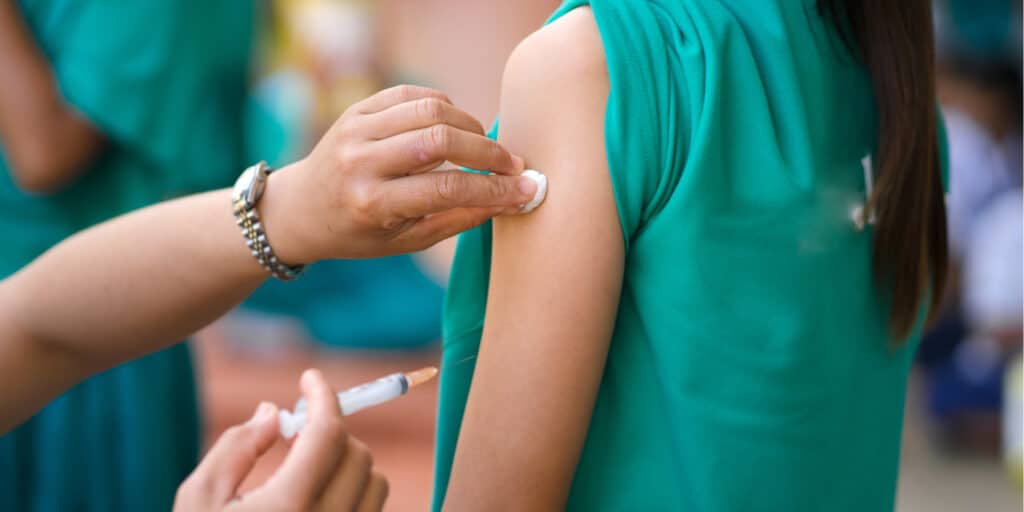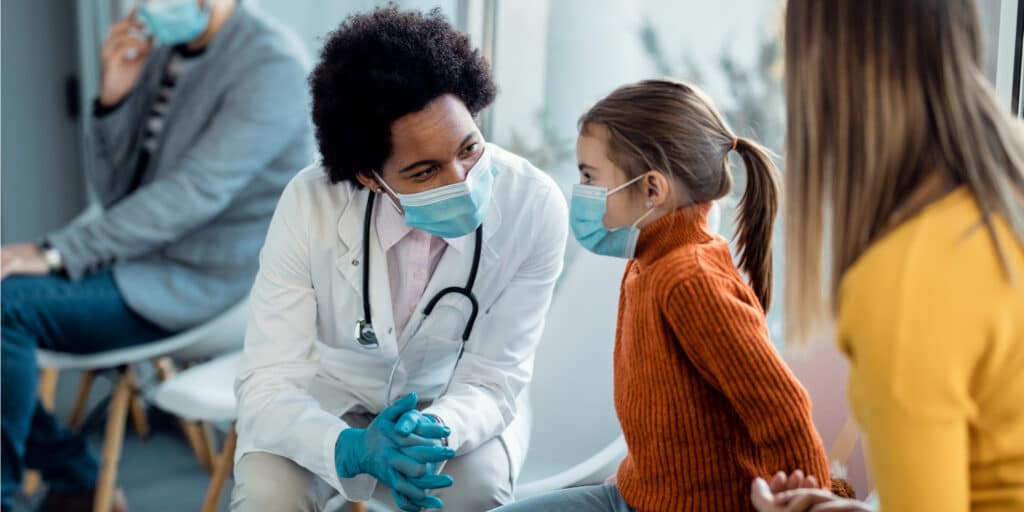Cervical cancer is a serious concern for people all around the world, including here in the United States. In the U.S alone, about 14,100 new cases of invasive cervical cancer will be diagnosed in 2022, and it is expected that about 4,280 people will die as a result. However, the good news is that cervical cancer is one of the most preventable and treatable forms of cancer. In honor of this year’s Cervical Cancer Prevention Week, we’re bringing you the five easiest ways to lower your risk of cervical cancer. Here’s everything you need to know
Cervical Cancer Prevention Week: How to Reduce Your Risk
While there is no surefire, 100% effective way of preventing cervical cancer, there are several things you can do to significantly lower your risk. This starts by not only understanding what cervical cancer is and what causes it but also by taking steps to ensure you are living a healthy lifestyle. Cervical cancer was once one of the most common causes of cancer death for Americans in recent decades. However, thanks to the increased use of both the Pap test and the HPV vaccine, the cervical cancer death rate has dropped significantly.
It’s not just cases here in America that could see a major decline. Recent Cancer Council NSW research has found that if we achieve high global coverage with both HPV vaccination and cervical screening, we could prevent nearly 13 million cases of cervical cancer over the next 50 years, and could achieve worldwide elimination of cervical cancer in most countries by the end of the century.
Cervical Cancer Prevention Week is a time for all of us to turn our attention towards eliminating cervical cancer. By practicing these five tips, you can lower your risk and help join the fight against cervical cancer.
HPV Vaccination Can Reduce Your Risk of Cervical Cancer

The HPV vaccine is without a doubt the most effective way at lowering your risk of cervical cancer. It is estimated that nearly 85% of people will get an HPV infection in their lifetime. While most of these infections will go away on their own, those that don’t can cause several types of cancer. HPV is estimated to cause nearly 36,000 cases of cancer each year in the United States. The HPV vaccine can prevent nearly 33,000 of these cancers by preventing infection; that’s about the same size as the average attendance for a baseball game.
The HPV vaccine protects against the types of HPV that most frequently cause cervical cancer, and is widely available in the United States. Most children only need two doses of the HPV vaccine when vaccinated before 15 years of age. You can take advantage of any visit to your child’s doctor to get recommended vaccines for your child. Currently, the CDC recommends that all individuals over the age of 12 get the HPV vaccine. and is free for most people who have health insurance in the U.S.
While HPV vaccines remain the best way to lower your risk of cervical cancer, it is still recommended that vaccinated individuals undergo regular screenings, as the vaccine does not protect against all types of HPV.
HPV-Based Screening
Along with getting the HPV vaccination, getting regular screenings is one of the most effective ways to lower your risk of cervical cancer. In its early stages, cervical cancer usually has no symptoms. The only way to know if there are abnormal cells in the cervix, which may develop into cervical cancer, is to have a cervical screening test. HPV testing looks for the presence of the virus that causes cervical cancer, which means doctors can find individuals who could be at risk of developing cervical cancer in the future.
Two types of screening tests can help prevent cervical cancer or find it early. The first is a Pap test or a Pap smear. This type of screening looks for precancers, which are cell changes on the cervix that might become cervical cancer if they are not treated appropriately. The second option is an HPV test. This test looks for the virus that can cause these cell changes that eventually lead to cervical cancer. According to the Centers for Disease Control and Prevention (CDC), starting at 21, you should receive regular HPV-based screenings every three years if test results are normal.
For those 30 and older, there are three options for screening. The first option is to continue getting regular Pap tests. If your test results are normal, most doctors recommend waiting no longer than three years until your next test.
The second option is to continue getting regular HPV tests. If test results are normal, it is recommended that you get another within the next four to five years.
Finally, the third option is to get a combination of the two tests. If your test results are normal, you can typically wait about five years before getting your next tests.
Recognize the Symptoms
While regular screenings and vaccinations are the most reliable ways to lower your chances of developing cervical cancer, it is also important to understand the potential symptoms. As with most cancers, detecting cervical cancer early greatly improves the chances of successful treatment.
Early-stage cervical cancer generally produces no signs or symptoms, which makes regular screening even more important. Some of the hallmark signs of more advanced stage cervical cancer include:
- Vaginal bleeding after intercourse, between periods, or after menopause
- Watery, bloody vaginal discharge that may be heavy and have a foul odor
- Pelvic pain or pain during intercourse
- Heavier periods that last longer than usual
Most importantly, listen to your body. If you notice any usual changes in your body, talk with your doctor immediately.
Talk with Your Doctor About Risk for Cervical Cancer

If you are worried about any symptoms you may be experiencing, or if you’re concerned about your risk for cervical cancer, talk with your doctor or general practitioner for further guidance. If you might be at higher risk of developing cervical cancer because of increased exposure to risk factors or specific personal history, your doctor will be able to help you take your next steps.
Cervical cancer is most commonly diagnosed in individuals between the ages of 35 and 44, with the average diagnosis being 50. Regular screenings are always recommended, and your doctor can help you follow up on any abnormal test results or symptoms you may be experiencing. Your doctor can also help educate you on other ways you can reduce your risk of cervical cancer. These may include things such as vaccination should you be unvaccinated, or other strategies such as exercising or limiting your drug or alcohol consumption.
You should always consult with your doctor if you are worried about your risk for cervical cancer.
Maintain a Healthy Lifestyle
You can reduce your risk for many cancers by leading a healthier lifestyle. For example, smoking increases the risk of developing cervical cancer in people with HPV. Other lifestyle choices that can help protect against several other cancers include:
- Eating a healthy, well-balanced diet
- Being physically active
- Limiting alcohol consumption
- Maintaining a healthy body weight
Maintaining a healthy lifestyle also includes practicing safe sex. HPV is a sexually transmitted virus. This means that practicing safe sex, especially for those who choose to remain unvaccinated, is an extremely effective way to lower your risk. Using condoms and limiting your number of sexual partners are two effective ways to lower your risk. Limiting your number of sexual partners won’t put you in the clear in terms of getting HPV. The virus is very common, so you can still get HPV even if you only have one sexual partner.
By practicing these five tips, you can dramatically reduce your chances of developing cervical cancer. Elimination of cervical cancer as a public health problem, on a global scale, is well within our sights. That’s why we encourage everyone to get involved during this year’s Cervical Cancer Prevention Week. Help spread awareness about this very treatable and preventable cancer, and make sure you know how to lower your risk.
How Are You Spreading Awareness During Cervical Cancer Prevention Week?
Let us know in the comments below!
What topics related to cervical cancer should we cover next?
Email us your ideas at info@painresource.com
Want even more Pain Resource Content?
Join the fastest-growing chronic pain community today by clicking here!


Great article! It’s a shame the vaccine is only effective for children.
Hello Dori,
While adolescents remain the most important focus of the HPV vaccination program in the United States, there is ample data that suggests, while minimal, there may be a slight benefit for those between the ages of 26 and 45 who have not yet been vaccinated.
Because HPV acquisition generally occurs soon after first sexual activity, vaccine effectiveness will be lower in older age groups because of prior infections. Nevertheless, some adults who are not adequately vaccinated might be at risk for new HPV infection and might benefit from vaccination in this age range.
It’s always best to talk with your doctor to see if the HPV vaccine is right for you.
Hope this helps!
Yes, it’s good to be aware of all the data. Thanks!